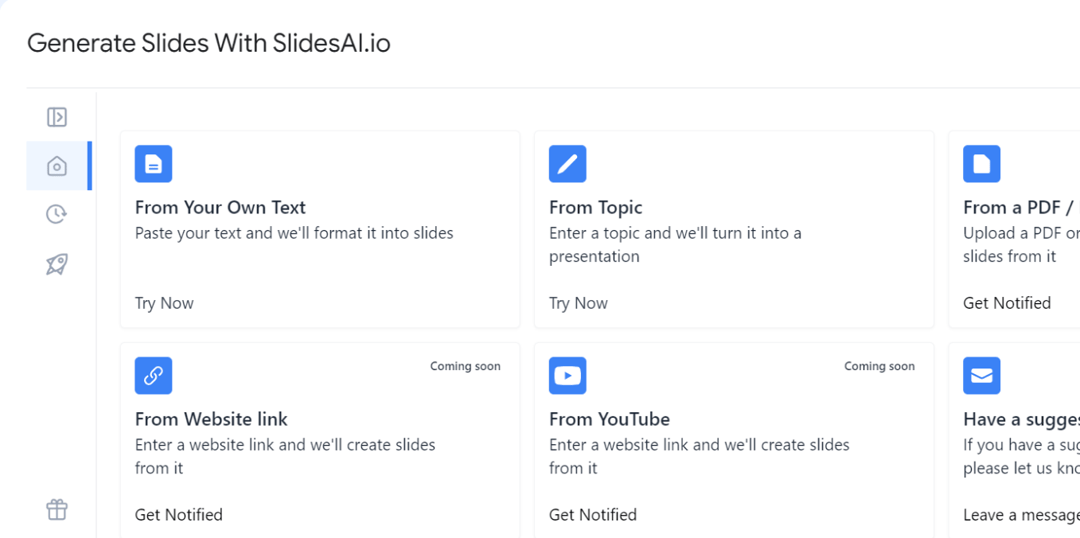Ever felt that your slides look too crowded or your audience is reading more than listening? That’s where the 5-5-5 Rule of PowerPoint presentation helps. It keeps your slides clean, your message clear, and your audience focused on you, not just the screen. It’s a simple way to make your presentations look professional without any design skills.
It is not a strict formula. Think of it as a design habit that reminds you to keep things short and to the point. Let’s learn more!
Key Takeaways
- The 5-5-5 rule keeps slides clean and readable. It implies using up to 5 bullet points, 5 words per bullet, and avoiding more than 5 text-heavy slides in a row to maintain clarity.
- It’s a guideline, not a strict formula. You can adjust the numbers. The real goal is simplicity and better audience attention, not sticking to exact counts.
- It boosts focus and message retention. Clean slides help your audience listen to you, remember key points, and avoid cognitive overload.
- It doesn’t suit every presentation. Data-heavy, technical, or storytelling slides may need more words, visuals, or context than the rule allows.
- Best for business, education, and info-based decks. Pitch decks, classroom lessons, and general informative presentations benefit most from this rule’s simplicity.
What is the 5-5-5 Rule in PowerPoint?
The 5-5-5 rule suggests keeping a maximum of 5 bullet points per slide, 5 words per bullet, and not using more than 5 text-heavy slides in a row. It encourages simplicity. The idea is to help your audience focus on your message, not just your slides.
However, this rule is flexible. You do not always have to stick to exactly 5 bullets or 5 words. The real goal is clarity, not counting words.
Comprehending Every Aspect of the 5-5-5 Rule of PowerPoint Presentation
Each of the three straightforward components of this rule is intended to reduce clutter and enhance readability in the following ways.
1. Each Slide Must Contain No More Than Five Bullet Points
Your slide may appear crowded if it has too many bullet points. You can concentrate on the most crucial details by keeping it to five.
For instance, The Advantages of Online Learning Include:
- A large course selection
- Flexible scheduling
- Reasonably priced courses
- Learn at your own pace
- Access from any location
2. Each Bullet Point Must Contain No More Than Five Words
Brief bullet points are simpler to read and retain. Although five words are only a suggestion, it is helpful to keep them short.
For instance: • Develop better habits via repetition.
3. There Should Be a Maximum of 5 Consecutive Structured Slides
Seeing one text-heavy slide after another can drain attention. Try mixing in images, charts, or infographics between your content slides.
Tip: Add storytelling, visuals, or short videos between information slides to break monotony.
Benefits of the 5-5-5 Rule in PowerPoint Presentations
Less text, more impact! That’s the power of the 5-5-5 Rule. Here’s why it works and keeps your audience truly tuned in:
- Helps the Audience Stay Focused: Less text means more attention on you, the presenter, and your message.
- Improves Memory and Retention: Simple and organized slides are easier to remember, even after the presentation.
- Makes Communication Clearer: Clean slides help your audience quickly understand your key ideas without guessing.
- Reduces Cognitive Load: When information is not crowded, the brain processes it comfortably and without stress.
Create presentation slides with AI in Seconds in PowerPoint
- No design skills required
- 3 presentations/month free
- Don't need to learn a new software
Works with PowerPoint

When the 5-5-5 Rule Isn’t a Perfect Fit?
The 5-5-5 rule of PowerPoint is super helpful, but it doesn’t work perfectly in every situation. Here are some real-world drawbacks to consider, based on insights (and a few examples).
1. It Doesn’t Fit Highly Technical or Data-Heavy Slides
While presenting complex data or detailed and technical analysis, five lines or five words can feel too restrictive. In those cases, you might need more text just to communicate key numbers and trends. For example, if you use this rule for quarterly revenue trends in a financial report, you might leave out important information and confuse stakeholders.
2. It Can Limit Storytelling, Visuals, or Context
The rule encourages brevity, but not every message can be distilled into short bullet points. In a narrative-driven presentation, say you want to share a case study, customer testimonials, or a launch story, you likely want more than just a few simple phrases.
3. It Risks Oversimplifying Important Ideas
Some topics simply don’t lend themselves to being shrunk into five words or five lines. For example, in training workshops on sensitive subjects (like ethics or healthcare), or when explaining complex business strategies, important nuances could get lost. You might end up oversimplifying in a way that hurts understanding or accuracy if you force the 5-5-5 mold.
Frequently Asked Questions
1. Why is the 5-5-5 rule of PowerPoint useful?
It keeps your slides clean, prevents overcrowding, and makes it easier for your audience to focus on your message.
2. Can I use more than 5 words or more slides?
Yes, absolutely. The rule is flexible and not suitable for all circumstances. If you need more words or slides to explain something properly, use them.
3. What type of presentations work well with the 5-5-5 rule?
Business pitches, classroom lessons, educational workshops, and general informative presentations benefit the most from the 5-5-5 rule of PowerPoint presentations.
4. What are the limitations of the 5-5-5 rule?
This rule may not work well for technical, data-heavy, or detailed presentations that require more explanation, visuals, or examples.




